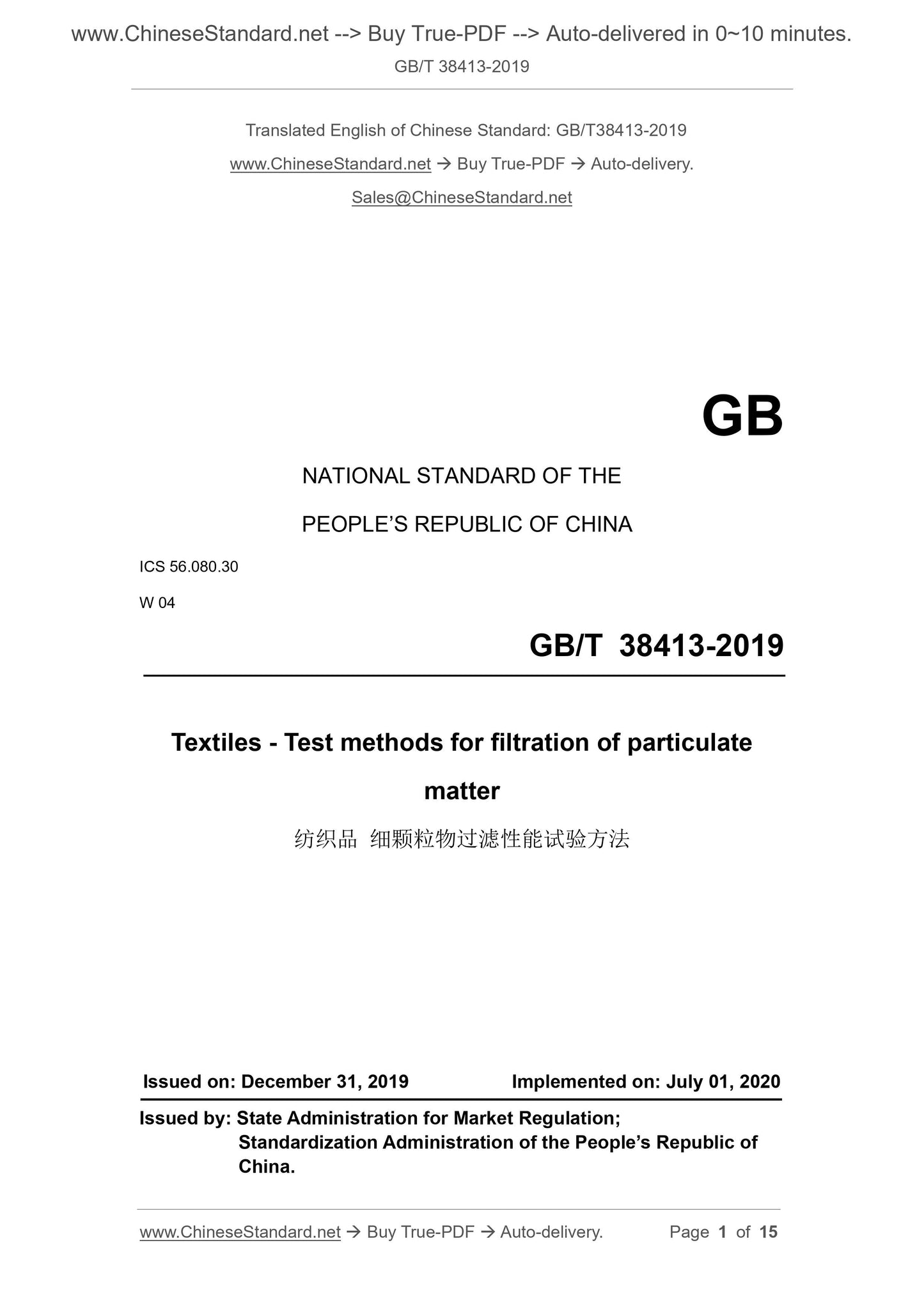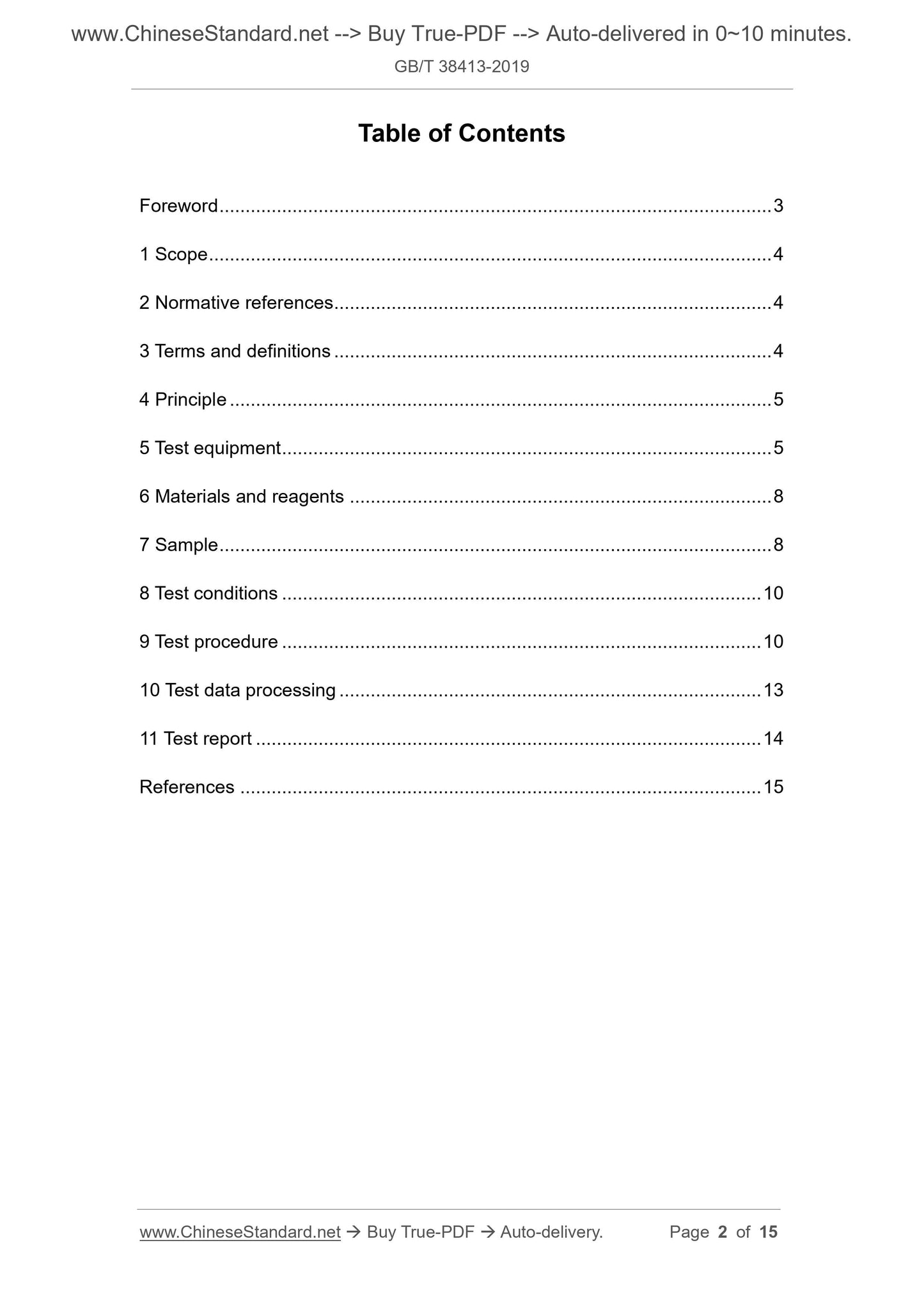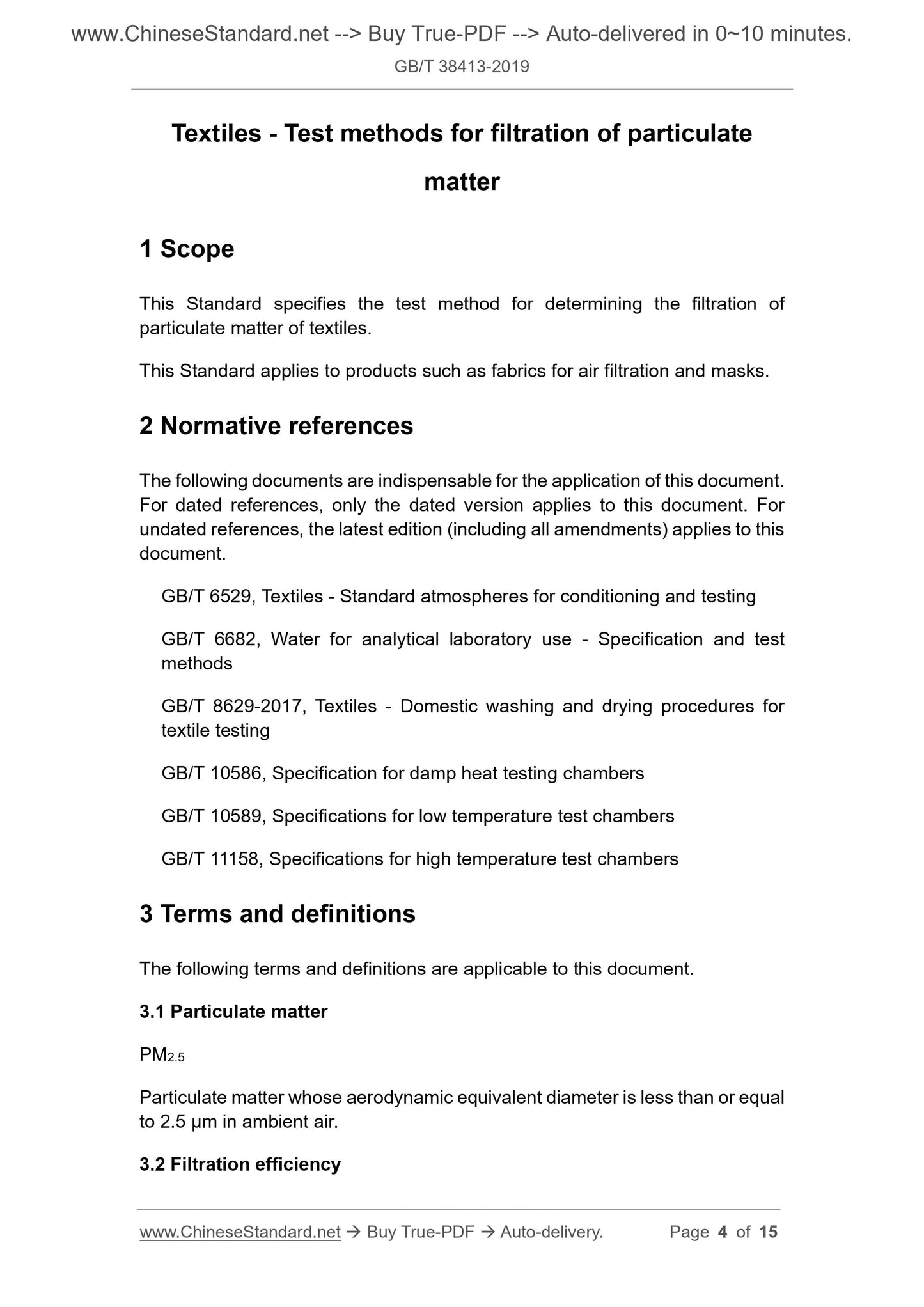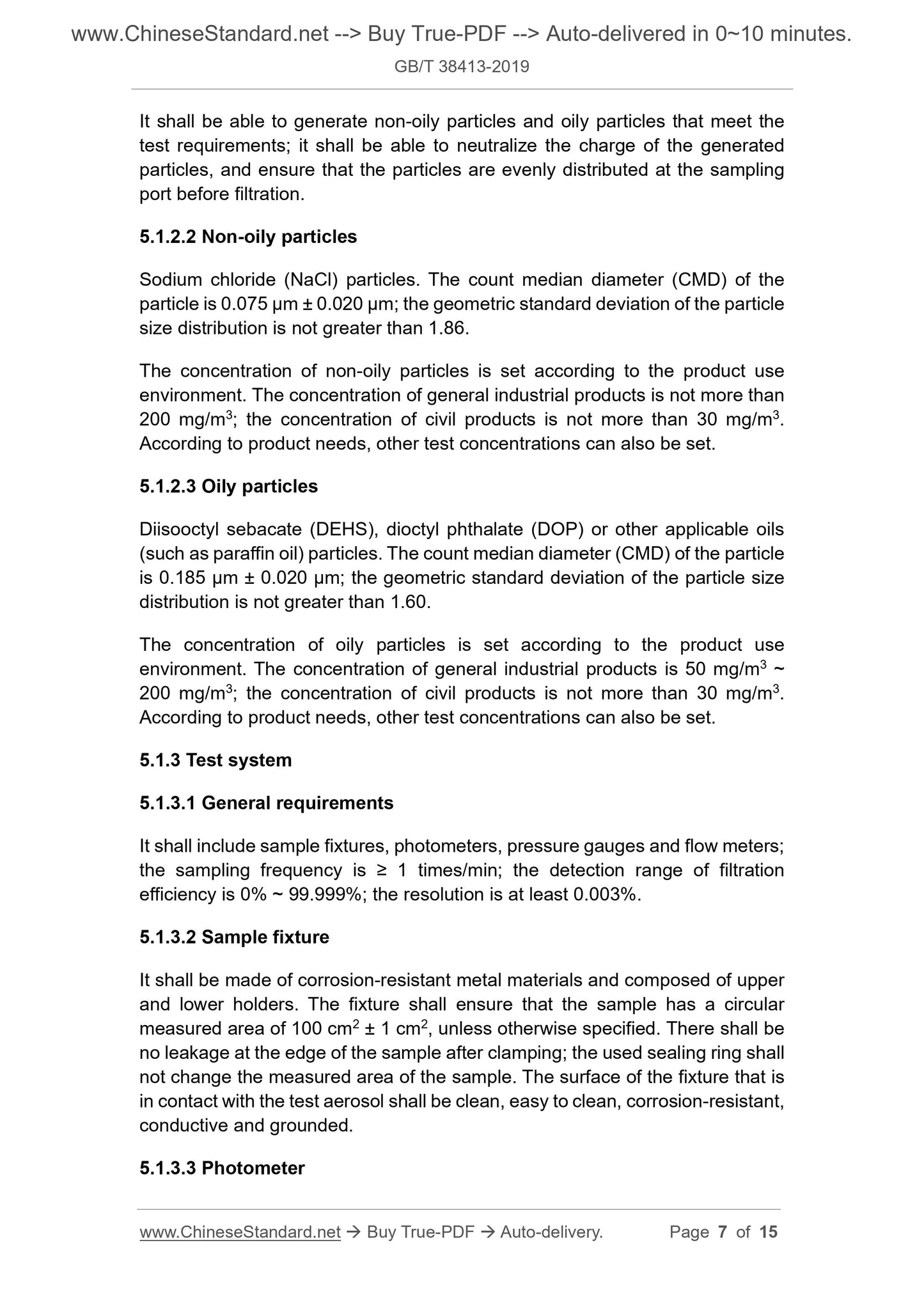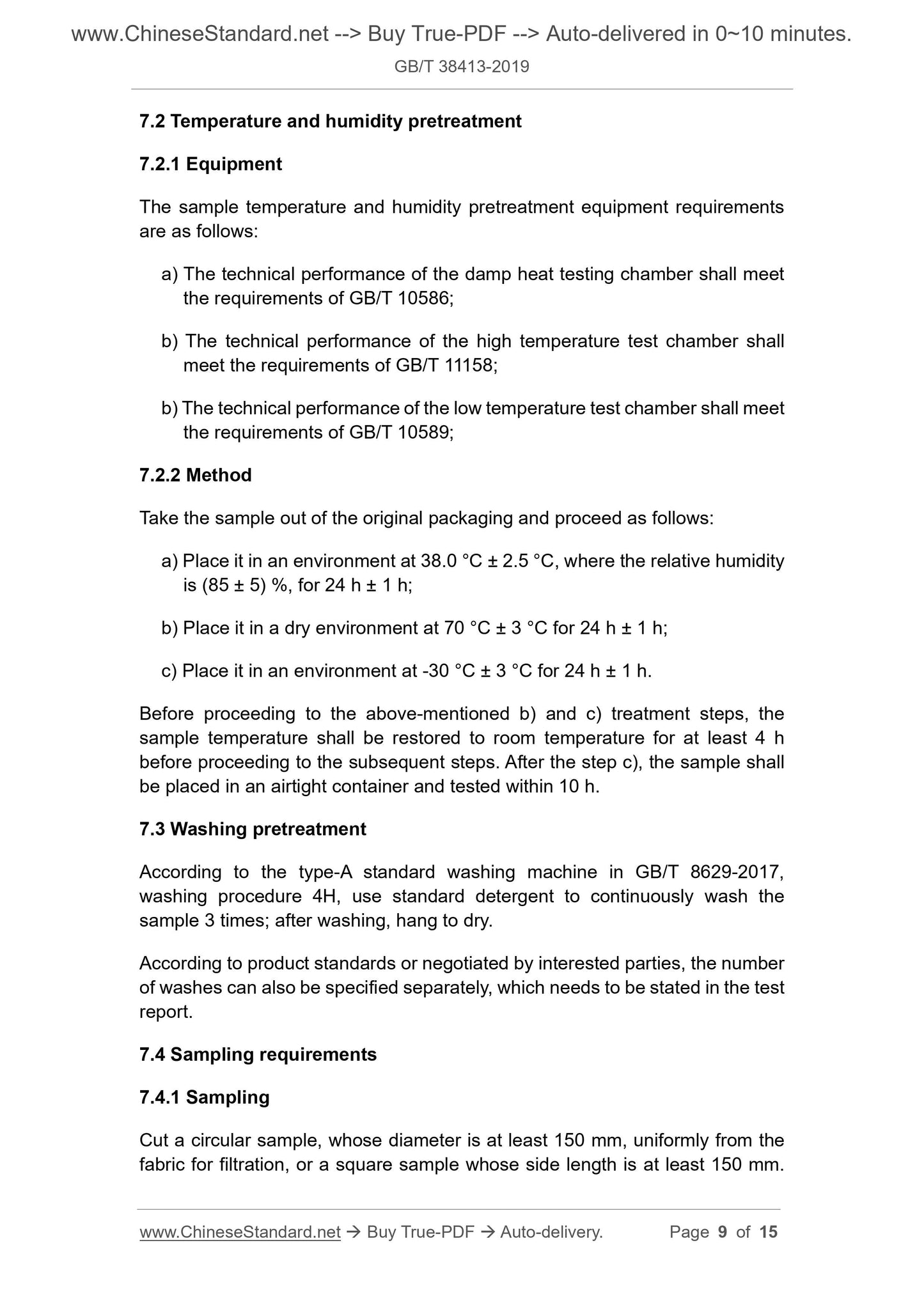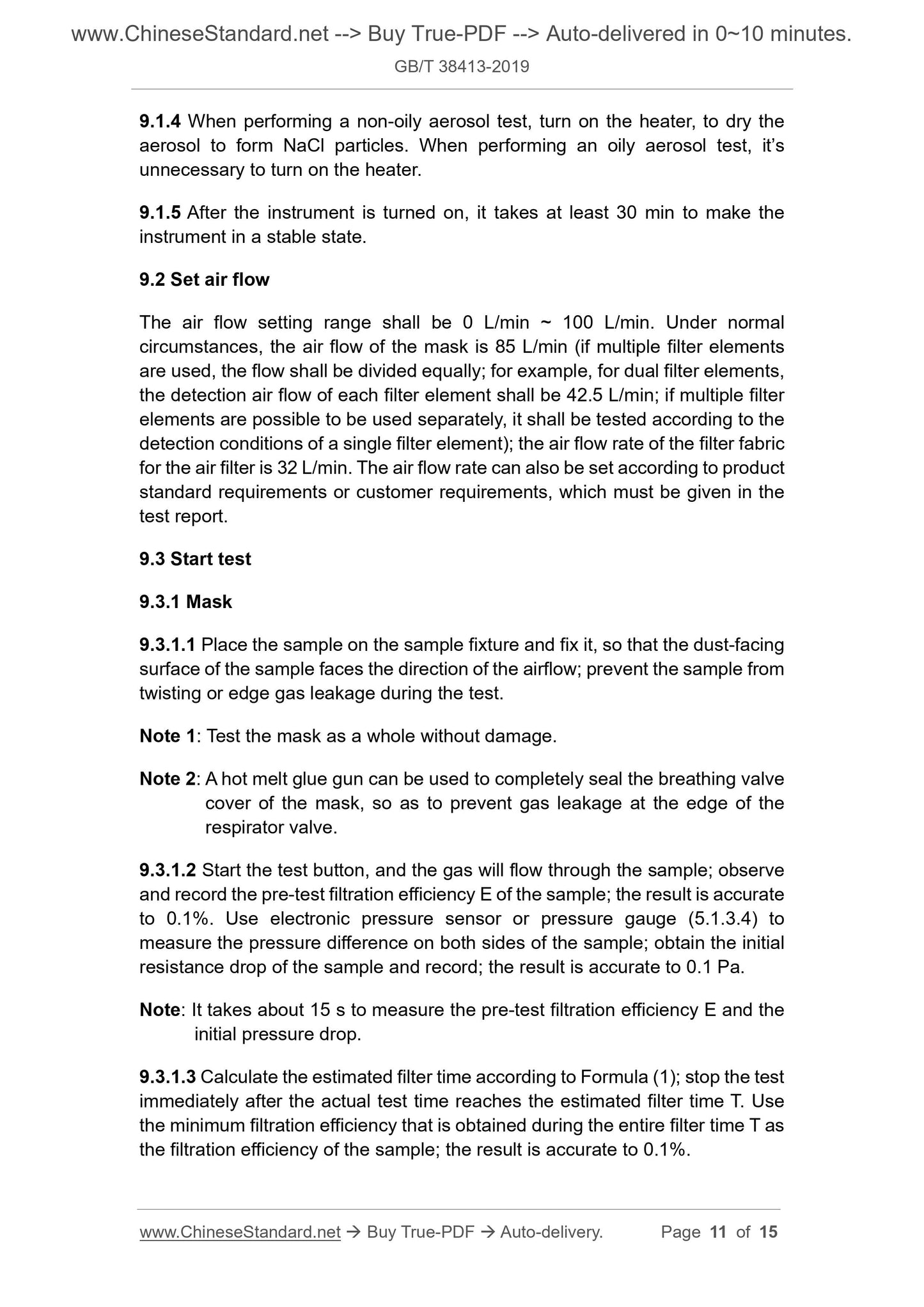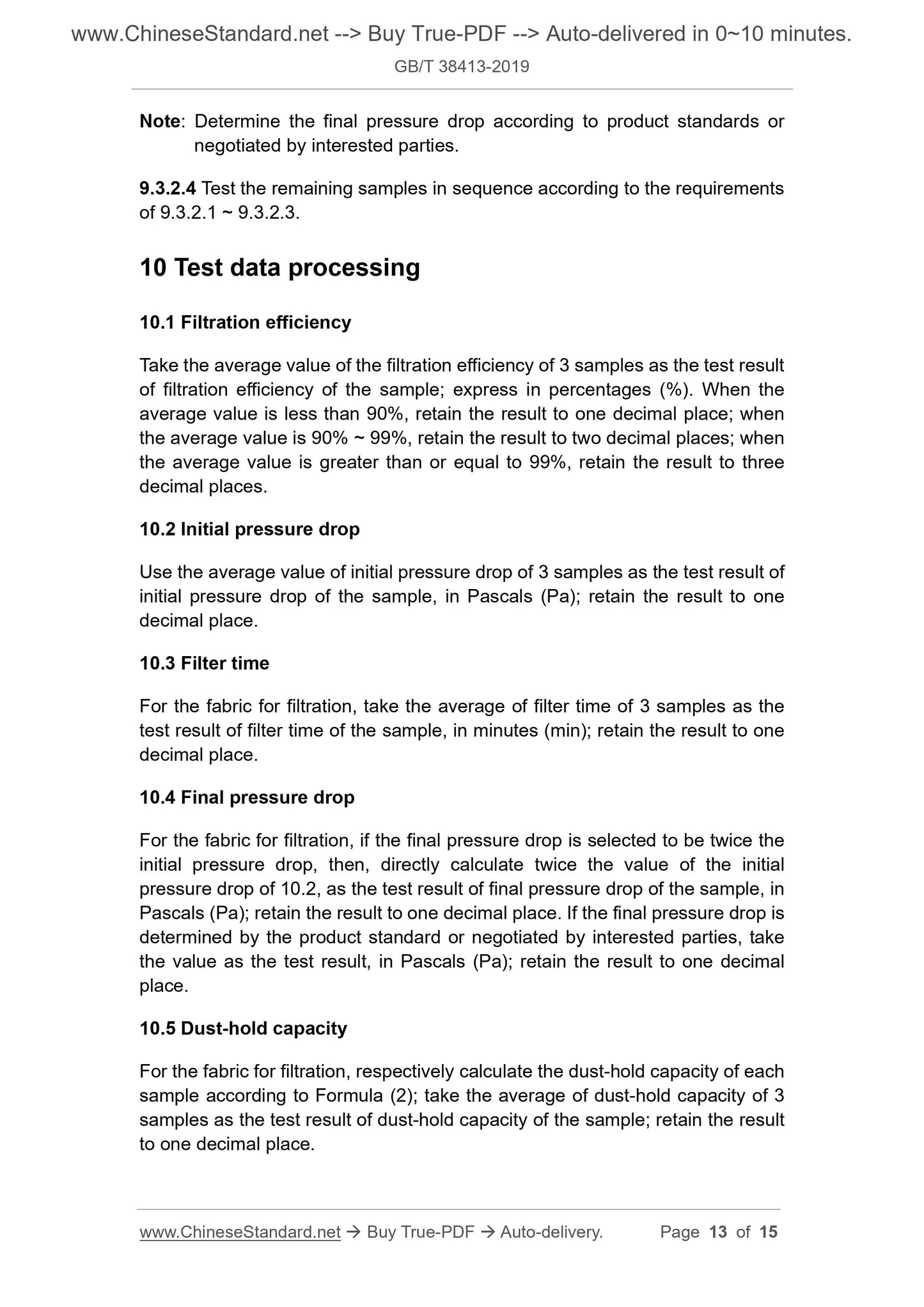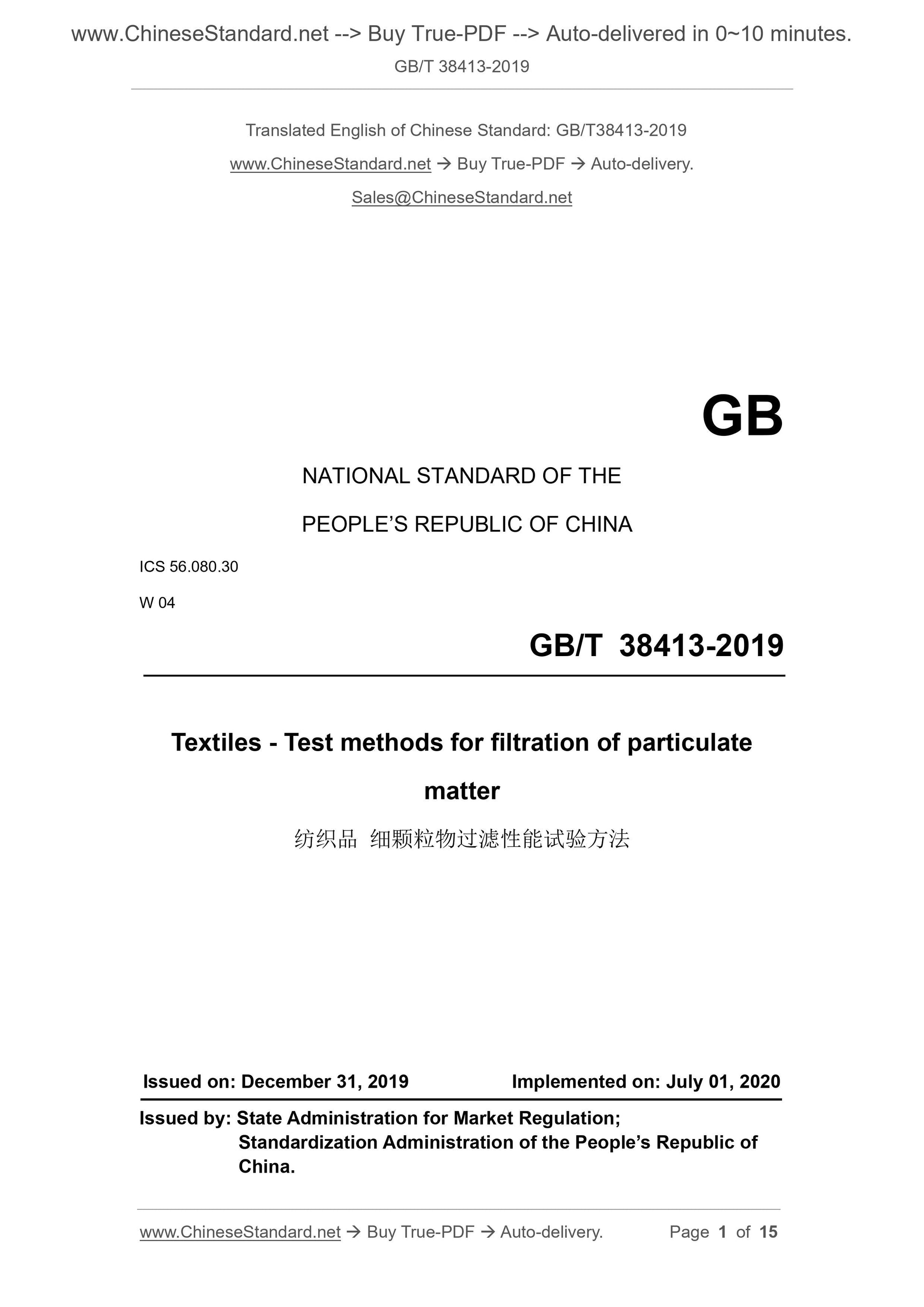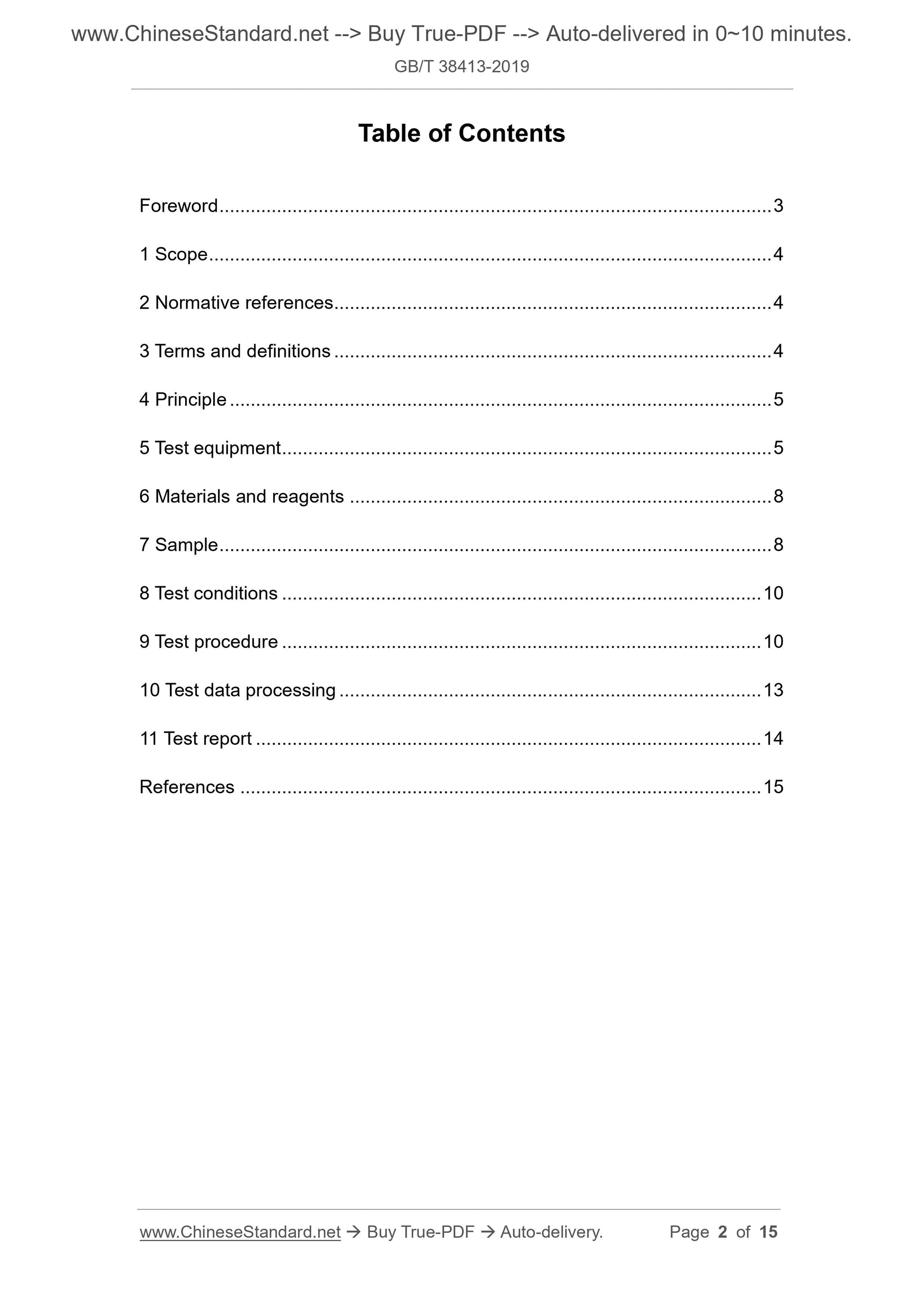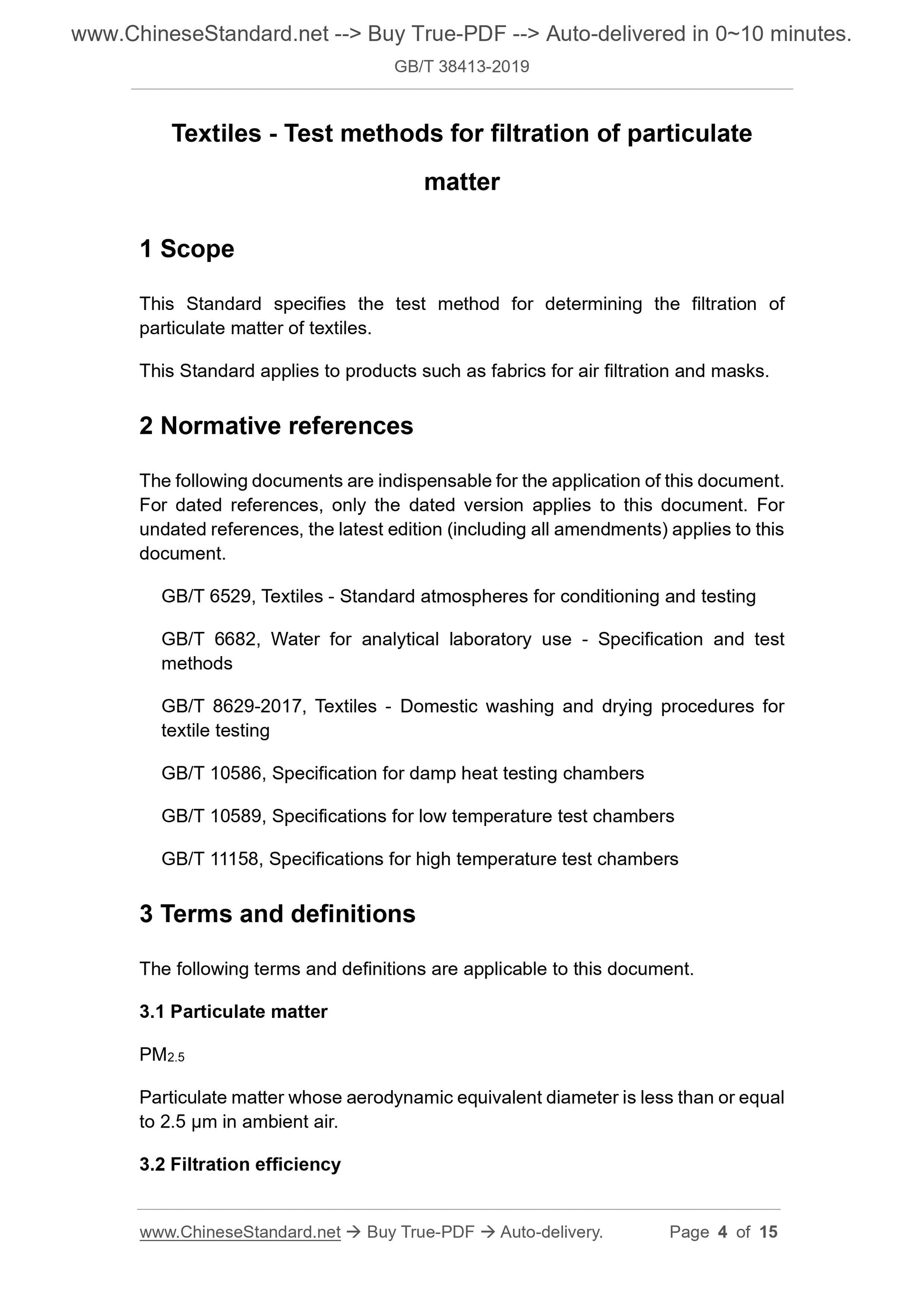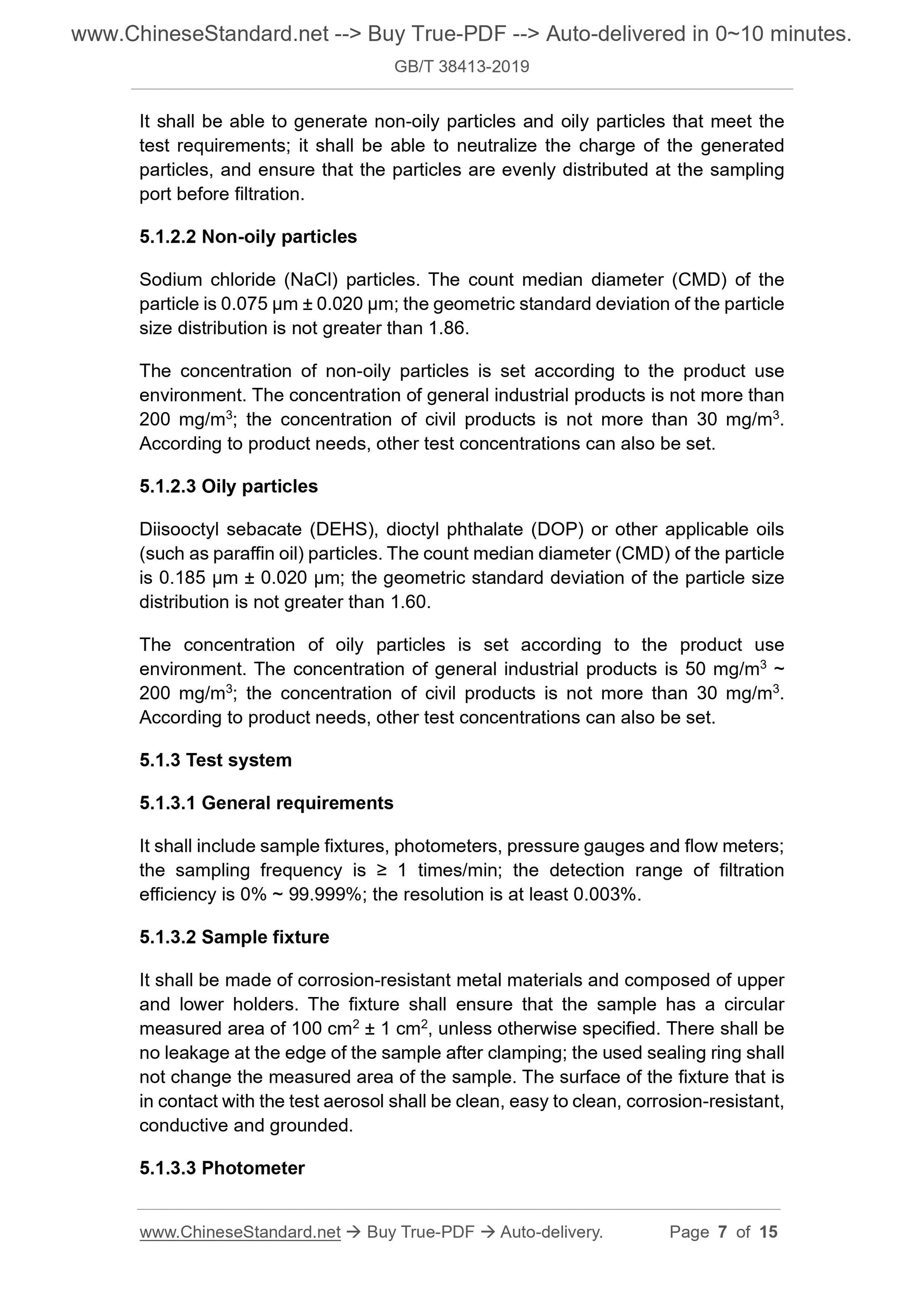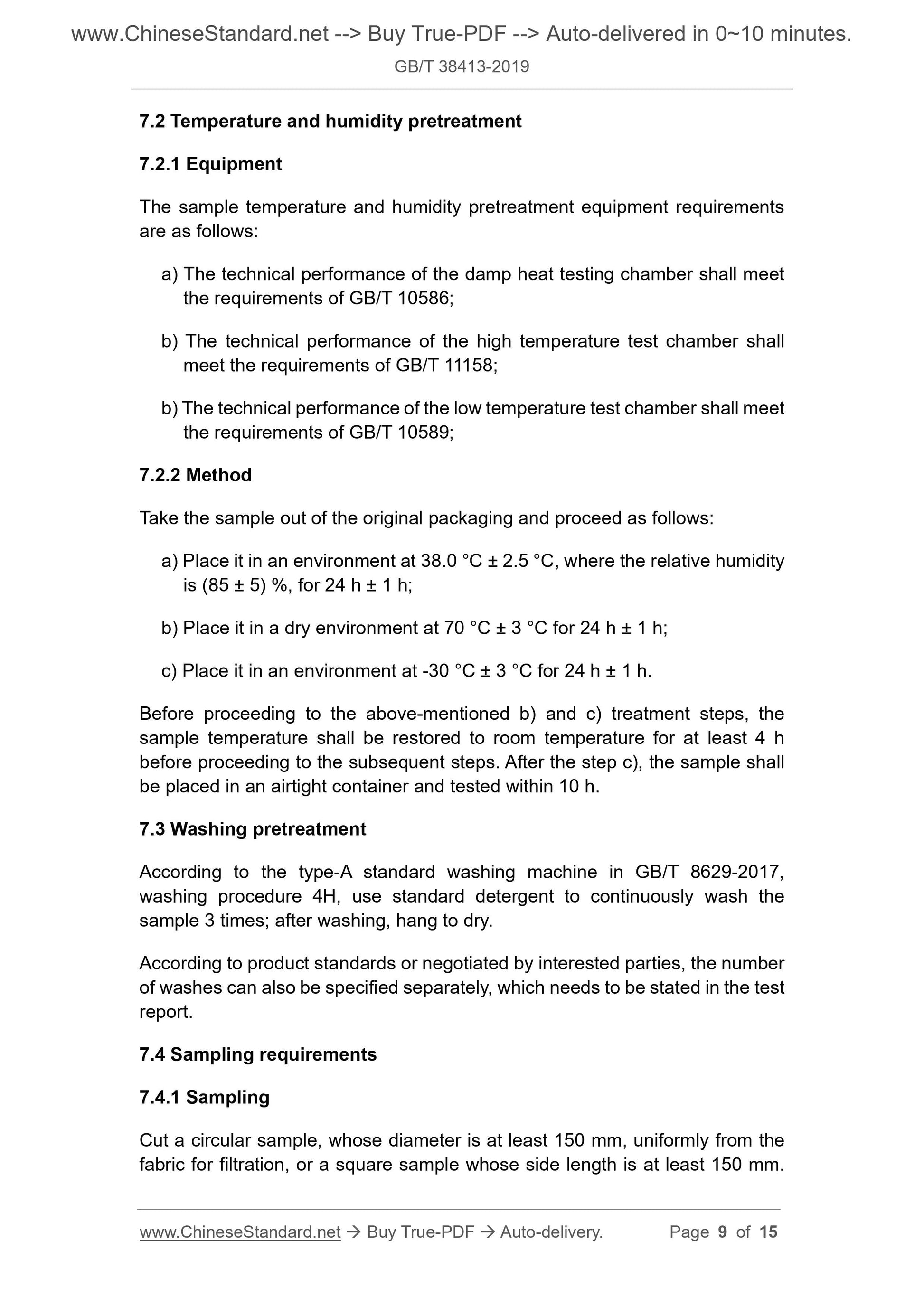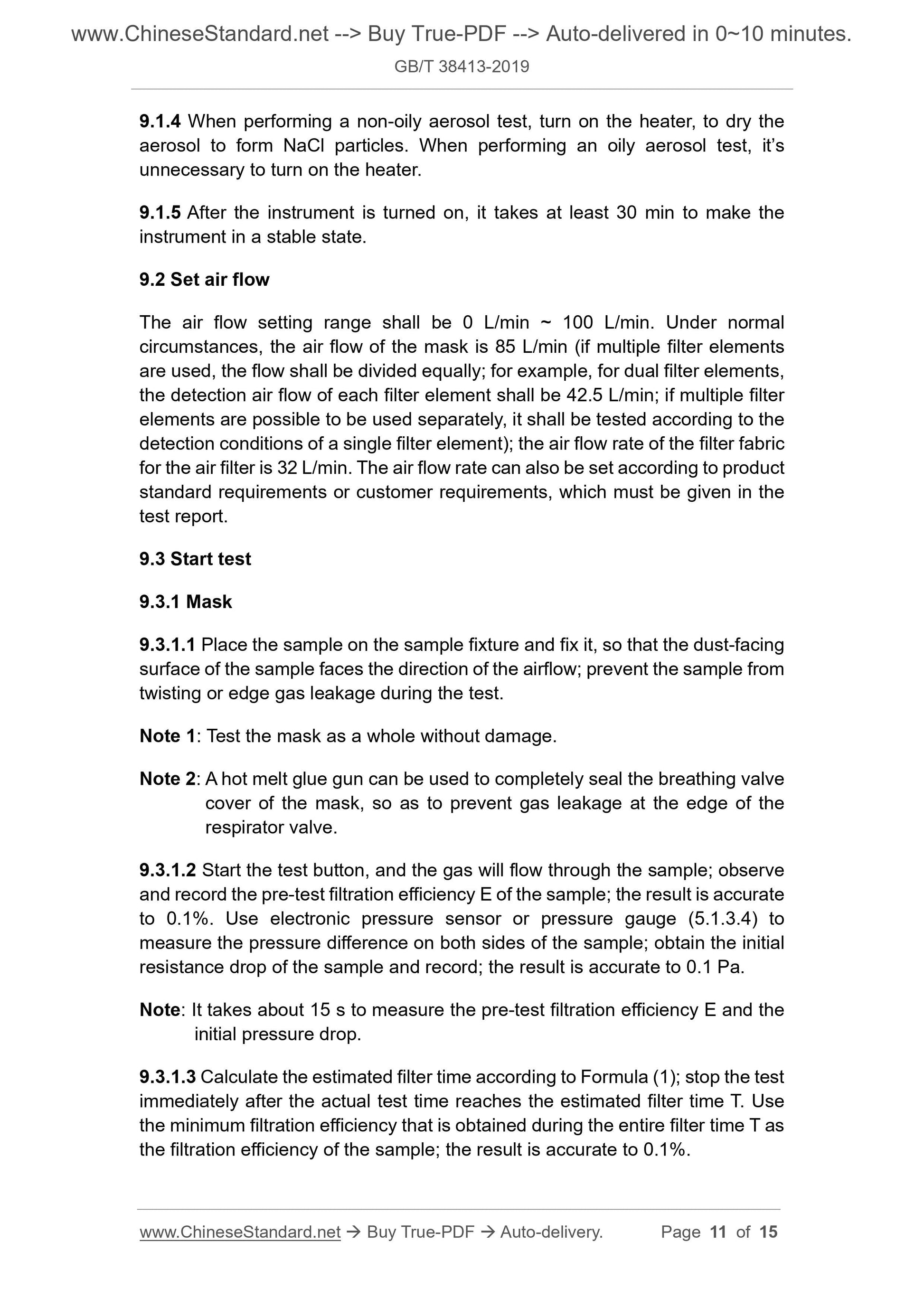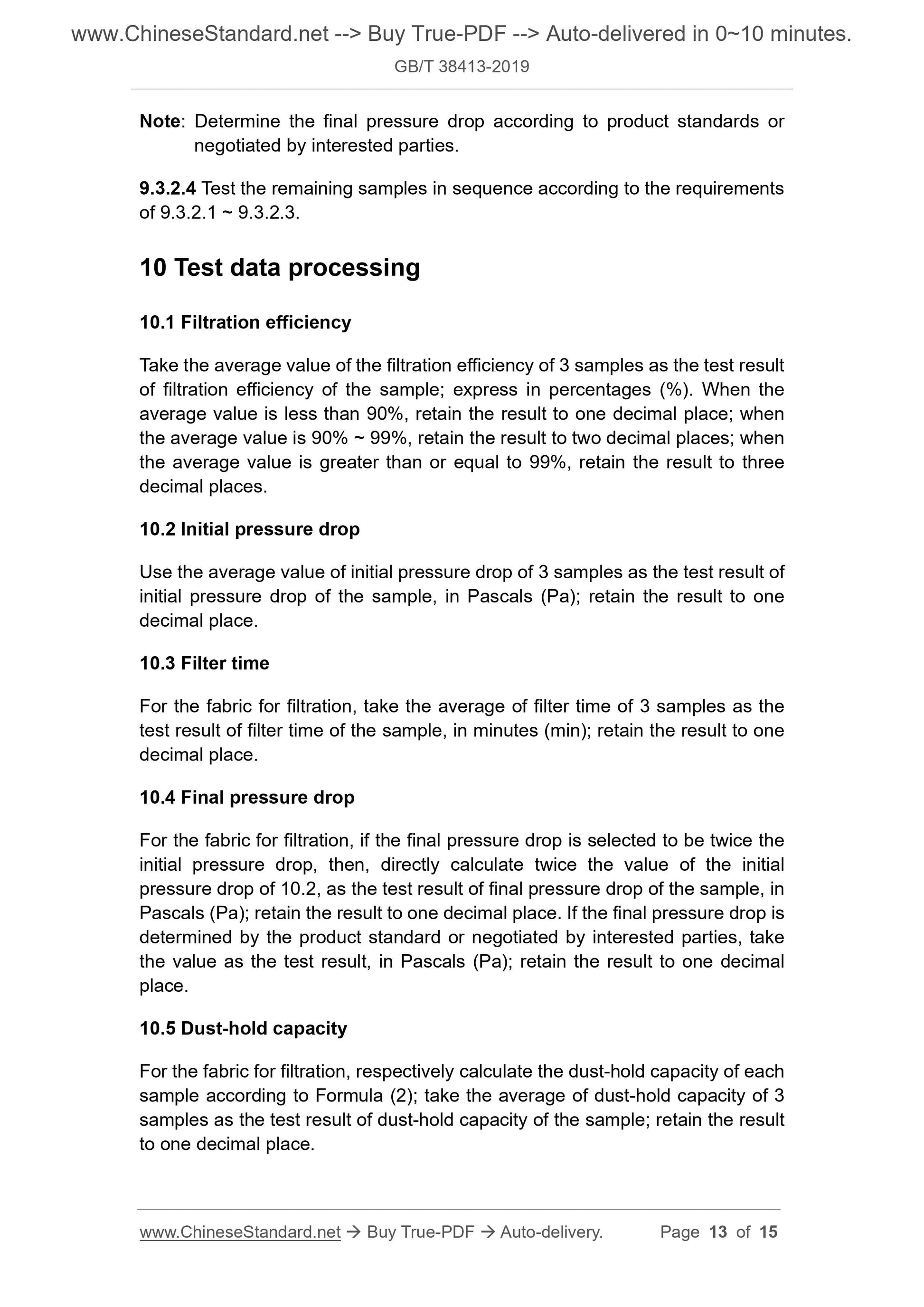1
/
of
7
www.ChineseStandard.us -- Field Test Asia Pte. Ltd.
GB/T 38413-2019 English PDF (GB/T38413-2019)
GB/T 38413-2019 English PDF (GB/T38413-2019)
Regular price
$150.00
Regular price
Sale price
$150.00
Unit price
/
per
Shipping calculated at checkout.
Couldn't load pickup availability
GB/T 38413-2019: Textiles - Test methods for filtration of particulate matter
Delivery: 9 seconds. Download (and Email) true-PDF + Invoice.Get Quotation: Click GB/T 38413-2019 (Self-service in 1-minute)
Newer / historical versions: GB/T 38413-2019
Preview True-PDF
Scope
This Standard specifies the test method for determining the filtration ofparticulate matter of textiles.
This Standard applies to products such as fabrics for air filtration and masks.
Basic Data
| Standard ID | GB/T 38413-2019 (GB/T38413-2019) |
| Description (Translated English) | Textiles - Test methods for filtration of particulate matter |
| Sector / Industry | National Standard (Recommended) |
| Classification of Chinese Standard | W04 |
| Classification of International Standard | 59.080.30 |
| Word Count Estimation | 10,182 |
| Date of Issue | 2019-12-31 |
| Date of Implementation | 2020-07-01 |
| Quoted Standard | GB/T 6529; GB/T 6682; GB/T 8629-2017; GB/T 10586; GB/T 10589; GB/T 11158 |
| Issuing agency(ies) | State Administration for Market Regulation, China National Standardization Administration |
| Summary | This standard specifies a test method for determining the filtration performance of textiles for fine particulate matter. This standard applies to air filtration fabrics and masks and other products. |
Share
